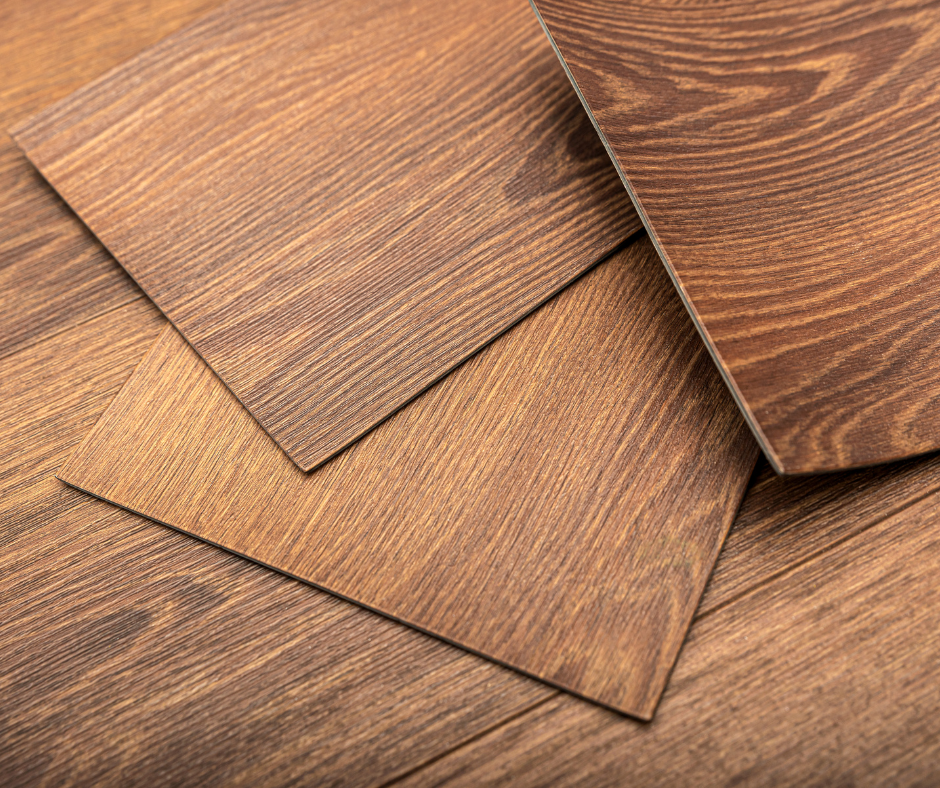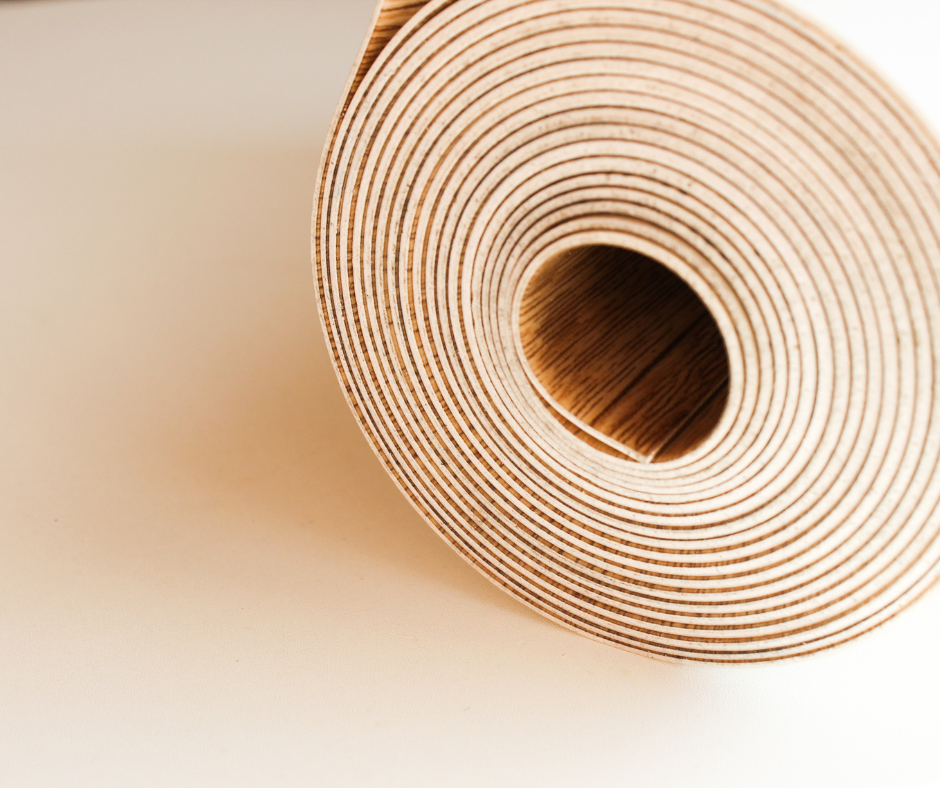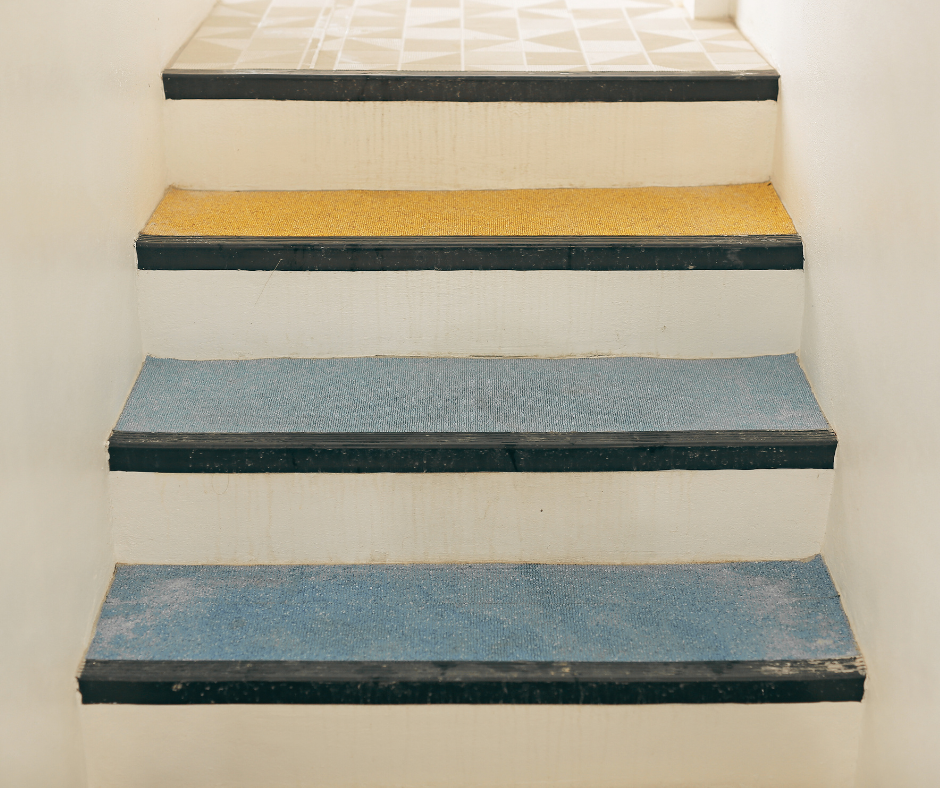Removing vinyl stair treads nailed in can seem like a tough job.
But with the right tools and approach, it can be done without too much hassle.
Vinyl treads are often nailed to keep them securely in place, much like carpet stair treads.
Removing them involves carefully prying them up while taking care not to damage the stairs underneath.
Are Stair Treads Nailed or Glued?
Stair treads can be installed using nails, glue, or a combination of both.
Nailing is often preferred for certain materials, including vinyl and wood.
It provides a secure hold, making the treads less likely to shift underfoot.
Gluing, on the other hand, is commonly used for materials like linoleum and rubber.
These materials benefit from a smooth and permanent attachment.
If you’re uncertain whether your stair treads are nailed, glued, or both, check the edges for visible nails.
Treads installed with glue will usually have a seamless appearance.
Tools You'll Need for Removing Vinyl Stair Treads Nailed In
Removing stair treads, especially nailed-in vinyl treads, requires a specific set of tools.
These tools help you complete the job without damaging your stairs.
Here’s a list of essential tools:
- Pry bar
- Hammer
- Utility knife
- Pliers
- Scraper
- Heat gun or hairdryer (for glued treads)
- Nail puller or claw hammer (for stubborn nails)
These tools will help you lift, pry, and scrape the treads from your stairs safely and efficiently.
Step-by-Step Guide on How to Remove Vinyl Stair Treads Nailed In
If your vinyl stair treads are nailed in place, follow these detailed steps to safely remove them.
Gather Your Tools
Start by collecting all necessary tools.
If you suspect glue is also involved, a heat gun or hairdryer may come in handy.
Cut Along the Edges
Use a utility knife to cut along the edges of the vinyl tread.
This helps to loosen the tread, making the removal process easier.
Be careful not to cut too deeply, as you want to avoid damaging the stairs beneath the vinyl.
Pry Up the Tread
Insert the pry bar under the edge of the vinyl tread.
Gently push the bar to lift the tread from the stair.
If necessary, use a hammer to tap the pry bar further underneath for more leverage.
Work your way around the perimeter, lifting the tread little by little.
Remove the Nails
Once you’ve lifted the tread enough to expose the nails, use pliers to carefully pull them out.
If the nails are particularly embedded, a nail puller or claw hammer may be needed.
Take your time to avoid damaging the underlying wood.
Clean the Surface
After the vinyl tread is completely removed, you may see adhesive residue or small pieces of vinyl left behind.
Use a scraper to remove any remaining material.
If the surface is uneven, consider sanding it down to create a smooth base for whatever comes next.
Check for Damage
Inspect the stairs for any damage caused during the removal process.
Small nail holes or scratches may need to be filled or sanded.
This step ensures your stairs are ready for their next treatment, whether that's new treads or a fresh finish.
What to Do After Removing Stair Treads
Once you’ve removed the stair treads, it’s important to clean and prep the surface.
Sand down any rough spots.
Remove adhesive residue with a scraper or adhesive remover.
Consider refinishing or painting the stairs to give them a new look.
Proper surface preparation ensures that your new treads or finish will last.
How to Remove Other Types of Stair Treads
When removing stair treads, the method varies depending on the material.
Here's how to remove vinyl, linoleum, oak, and rubber stair treads with care.
How to Remove Linoleum Stair Treads
Linoleum stair treads are typically glued down.
This makes their removal a different challenge.
The first step in how to remove linoleum stair treads is to carefully lift the linoleum itself.
Once you’ve peeled back the linoleum, heat the adhesive with a heat gun or hairdryer to soften it.
This makes it easier to scrape away the adhesive and remove the treads without damaging the stairs beneath.
Work in small sections, and be patient as this process can take some time.
Once the glue has loosened, use a scraper to lift the linoleum away from the stairs.
This process may take a bit of time.
Be patient and work in small sections to avoid causing damage to the underlying surface.
Removing Rubber Stair Treads
Rubber stair treads are commonly glued down with a strong adhesive.
This makes them somewhat difficult to remove.
Like with linoleum, heat the adhesive to soften it.
Then use a scraper to lift the rubber tread from the stair.
After removing rubber stair treads, clear off any leftover adhesive with a scraper or adhesive remover.
This can be a time-consuming process, so take it slow to achieve the best results.
Wrap-Up
Removing vinyl stair treads nailed in requires patience, the right tools, and careful technique.
Whether you’re dealing with vinyl, linoleum, oak, or rubber treads, following the correct removal process will help you avoid damage to your stairs.
Remember to work slowly.
Stay safe.
Give your stairs the attention they need before installing something new.
With these steps, you can confidently remove stair treads and refresh your home’s look.
This will bring new life to your staircase.




